Marrakesh is a bustling city in the heart of Morocco. It is a fantastic introduction to Morocco. Three days in Marrakesh is enough time to get a flavour of the markets of the Medina and important cultural sights, as well as visit the famous Jardin Marjorelle in the newer part of town. Plus you could even squeeze in a day trip to a historic Berber village.
Day 1: Medina and old town
Saadian Tombs
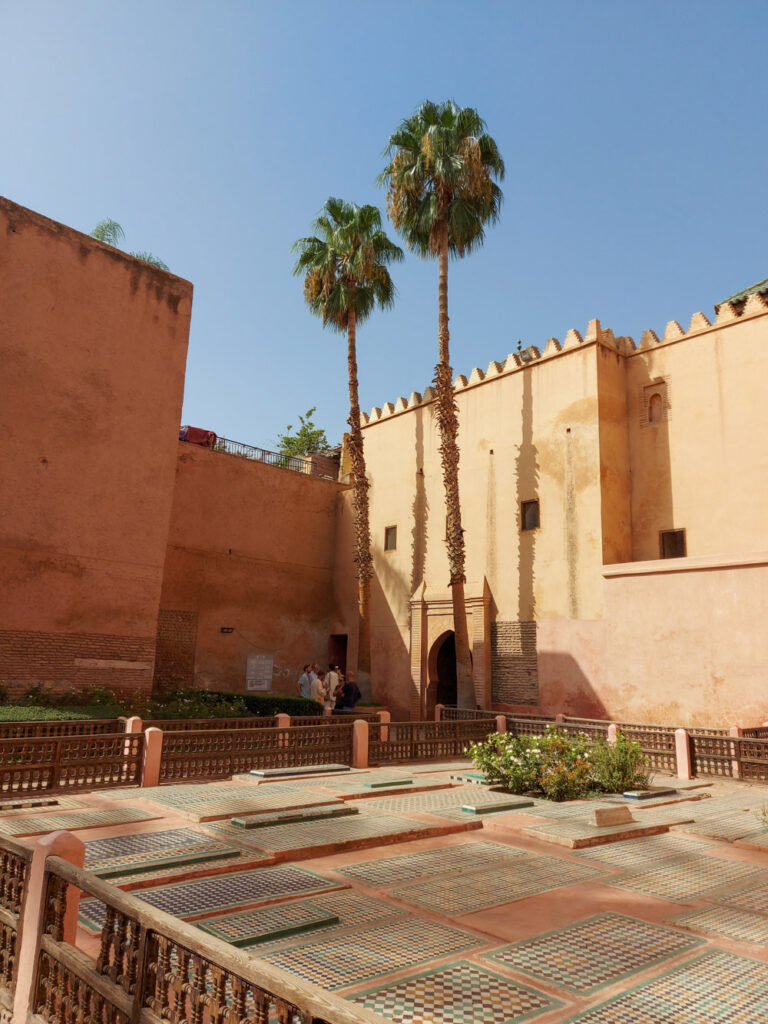
The Saadian Tombs is a vast courtyard with grand archways leading off into tiled rooms. It houses the tombs of the members of the Saadian Dynasty who lived in Marrakesh between 1554 to 1669. When the next dynasty took over, they left the tombs alone for fear of bad luck. However they did want to prevent others from visiting the tombs so they blocked off all but one small, hidden entrance. For around 250 years the tombs lay ruined and forgotten until 1917. The tombs have been restored now welcome crowds of visitors everyday.
Bahia Palace
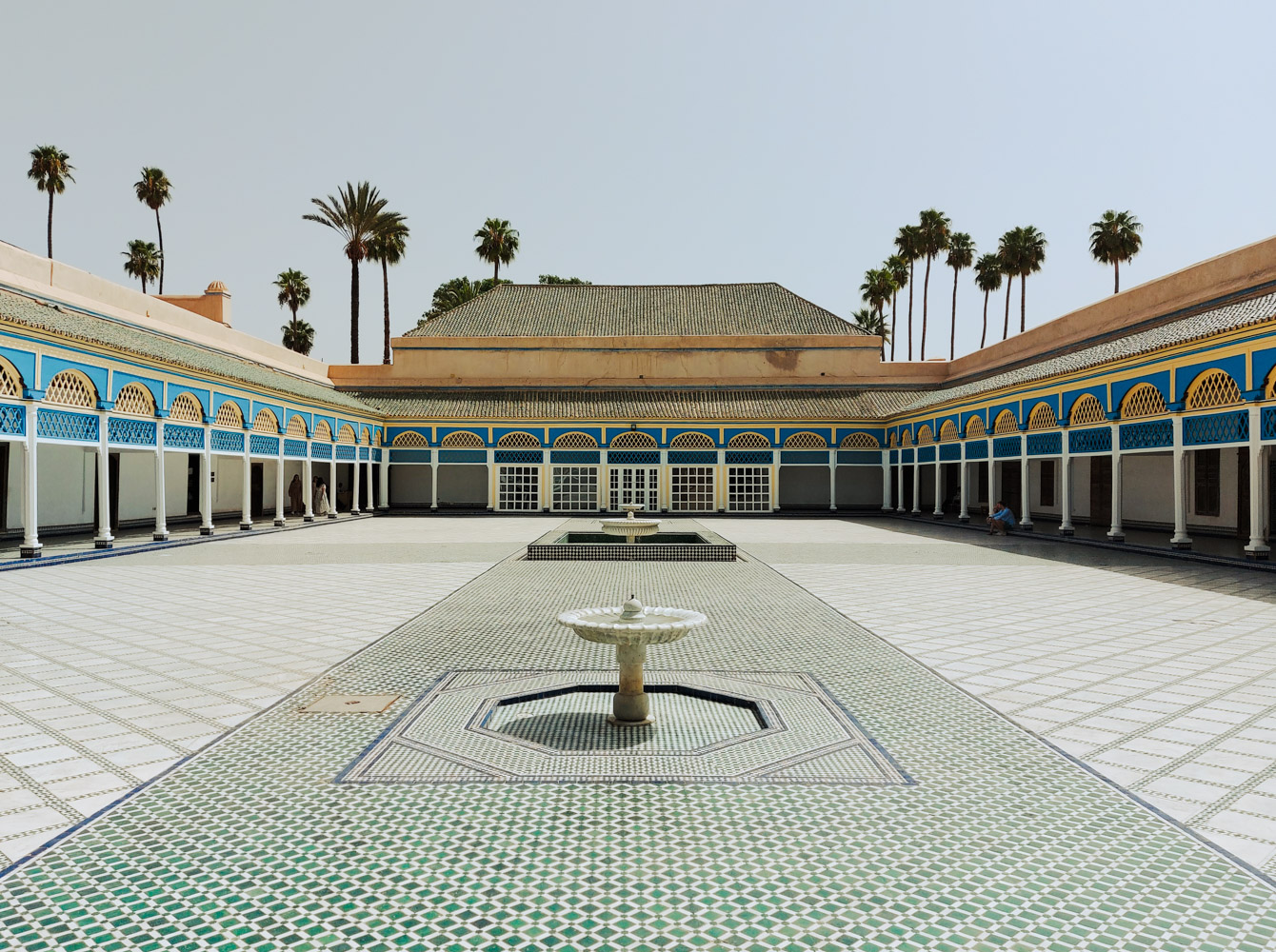
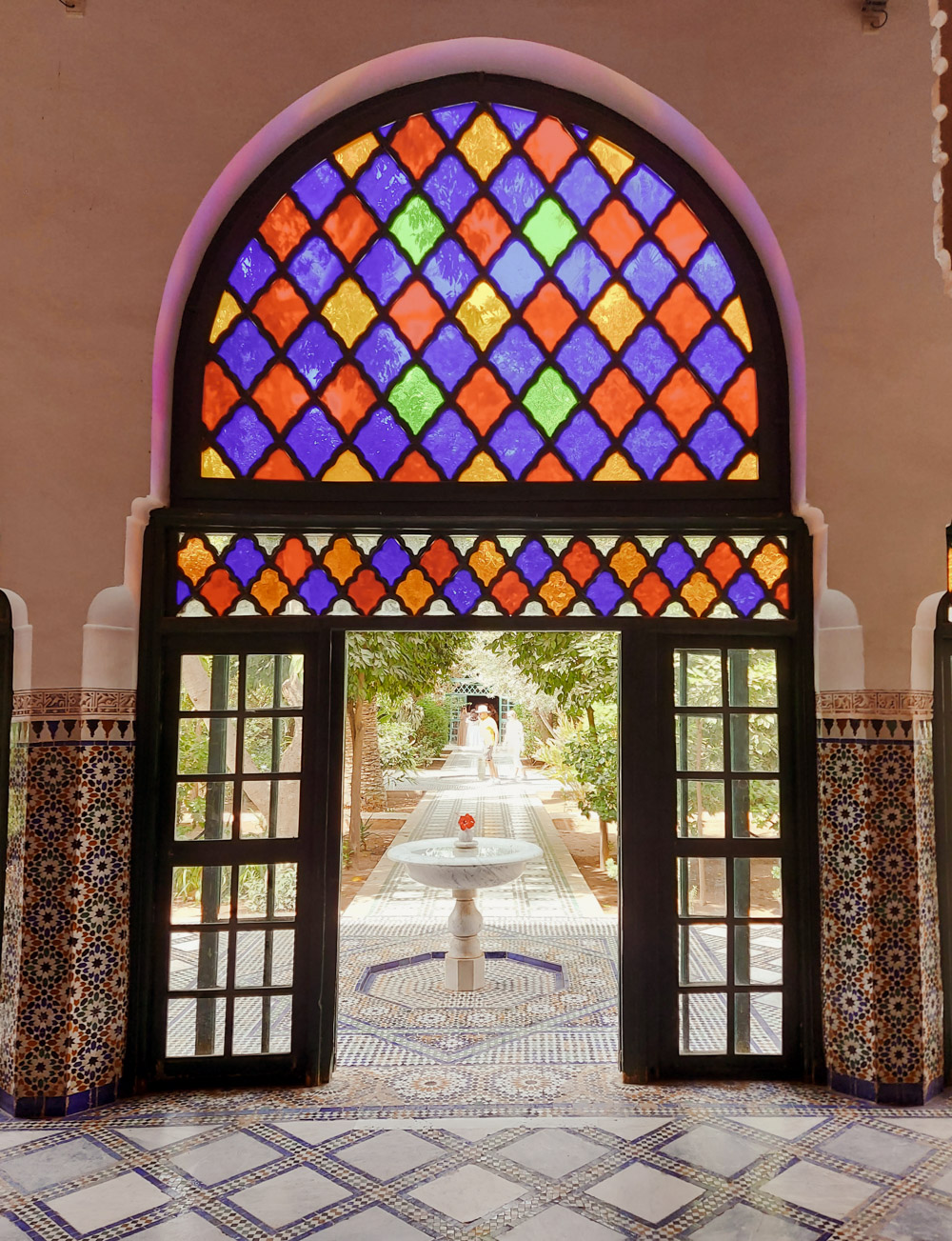
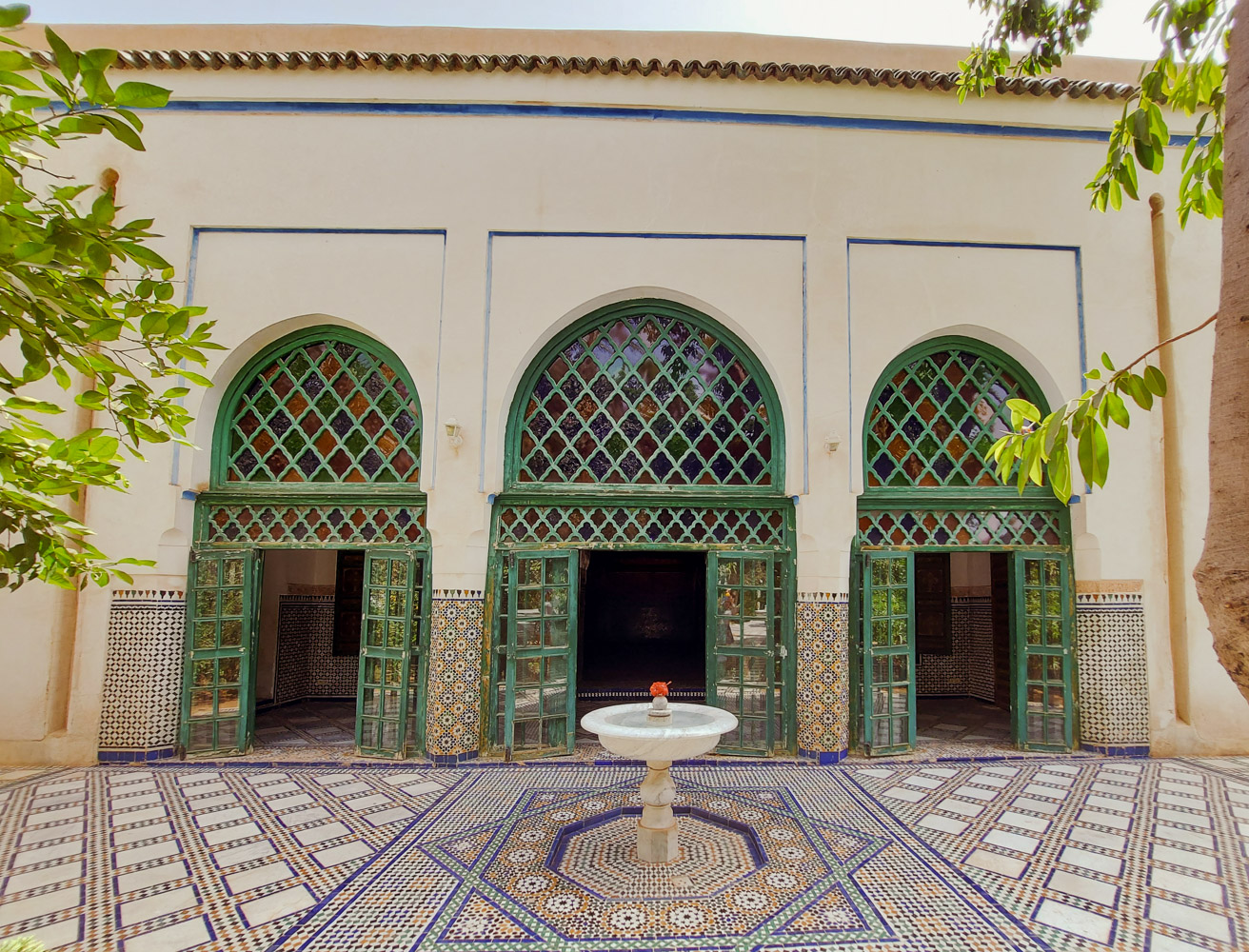
Bahia Palace is a sprawling palace with multiple courtyards. Each are decorated with intricate carved doors and arches, patterned tiles and fountains. You can wander in and out of rooms and look out on to the gardens through vibrant stained-glass. The palace was built in the 1800s and used as a royal residence for a while after Morocco gained independence. It is now a popular tourist attraction. Whilst there is still plenty to marvel at, the rooms are all bare so it is hard to imagine what each may have been used for and what kind of furniture may have filled it.
Koutobia Mosque
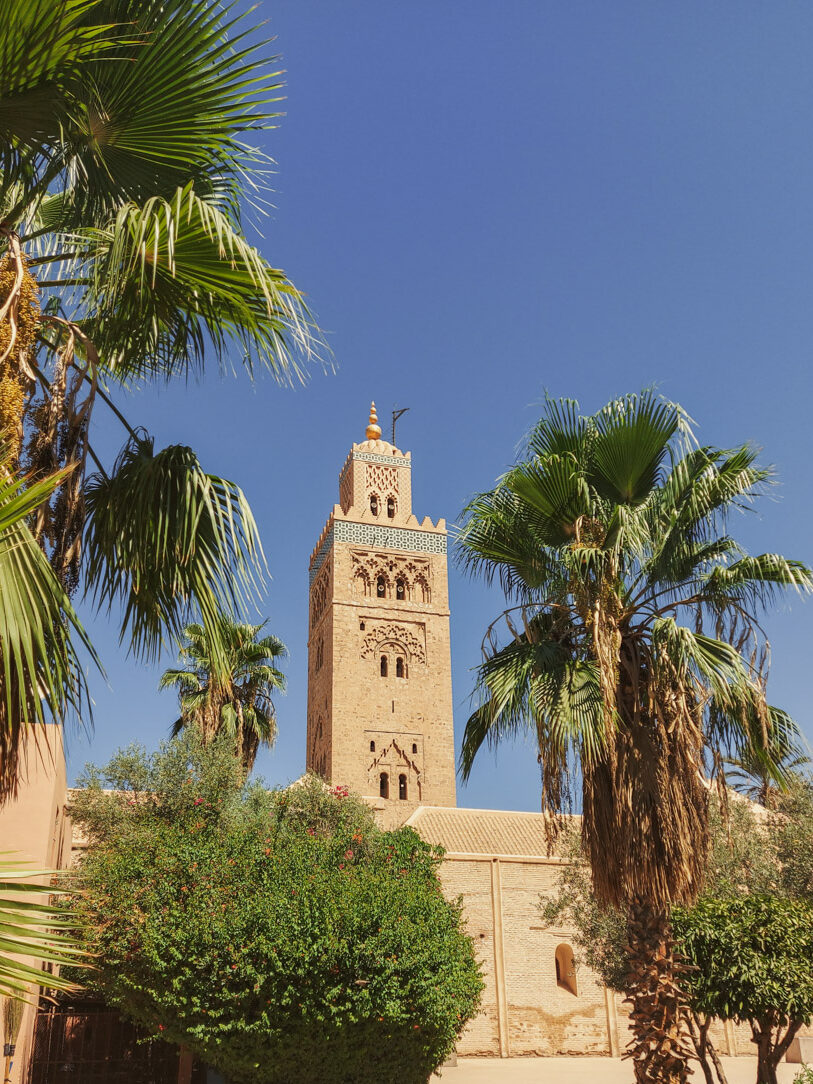
Koutoubia is stunning mosque that is over 900 years old. It is closed to non-muslims but you can admire its external beauty from the gardens beside it. The detailed designs and patterns used on the minaret (tower) have inspired architecture across the Morocco. Koutoubia is a beacon of the city, often visible for miles around.
Jemaa El Fnaa Square
Jemaa El Fnaa Square is a huge square by one of the entrances to the Souks (marketplace) of Marrakech. You would probably stumble upon it at one point or another and it is quite a spectacle to see but I wouldn’t spend too long here. There is a large food market that comes alive in the evenings. But beware, you’ll struggle to browse there or even pass by without being hassled and pleaded with by people working at the different stalls for you to try their food. It was all too much for me and we walked straight passed them all to find a quieter restaurant.
There are also lots of performers in the square. You will find snake charmers and dancing monkeys but try not to pay too much attention to these or fund them at all as both promote animal cruelty. The snakes are captured and their mouths are stitched closed so only a tiny slit remains for their tongue to protrude out. This mutilation means the snakes are unable to feed and so will starve to death only to be replaced by another. The monkeys are illegally captured and traded too.
Day 2: Trip to Ait Benhaddou
There are plenty of tour companies offering excursions and day trips from Marrakech. Some to the coastal town of Essaouira or further inland to Ouzoud Falls. The trip I would recommend is to the ancient berber village of Ait Benhaddou. The village is now a UNESCO world heritage site. There are families still living there but most moved to build homes in the newer town after coming into money as a result of being chosen as a filming location for Sodom and Gomorrah.
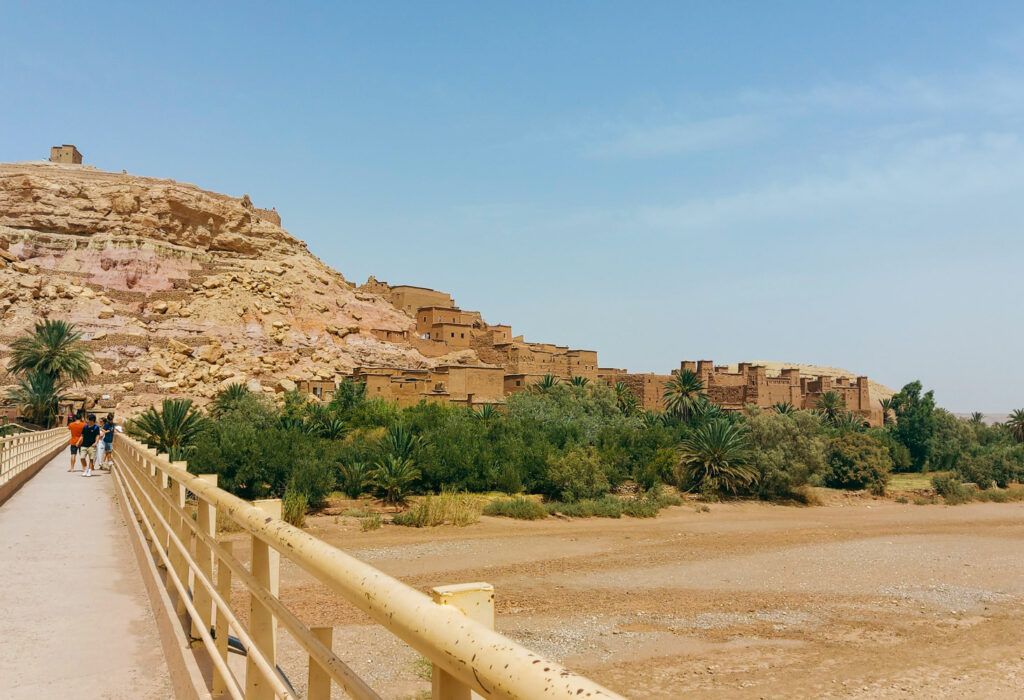
We booked our trip with Click Excursions through Trip Advisor. The drive from Marrakesh is 3 – 4 hours but our trip had a few other stops built in to break up the journey. We also pulled over at certain picturesque spots to take photos. The drive was in a comfy mini van with 6 other tourists.
Stop 1: Argan Oil
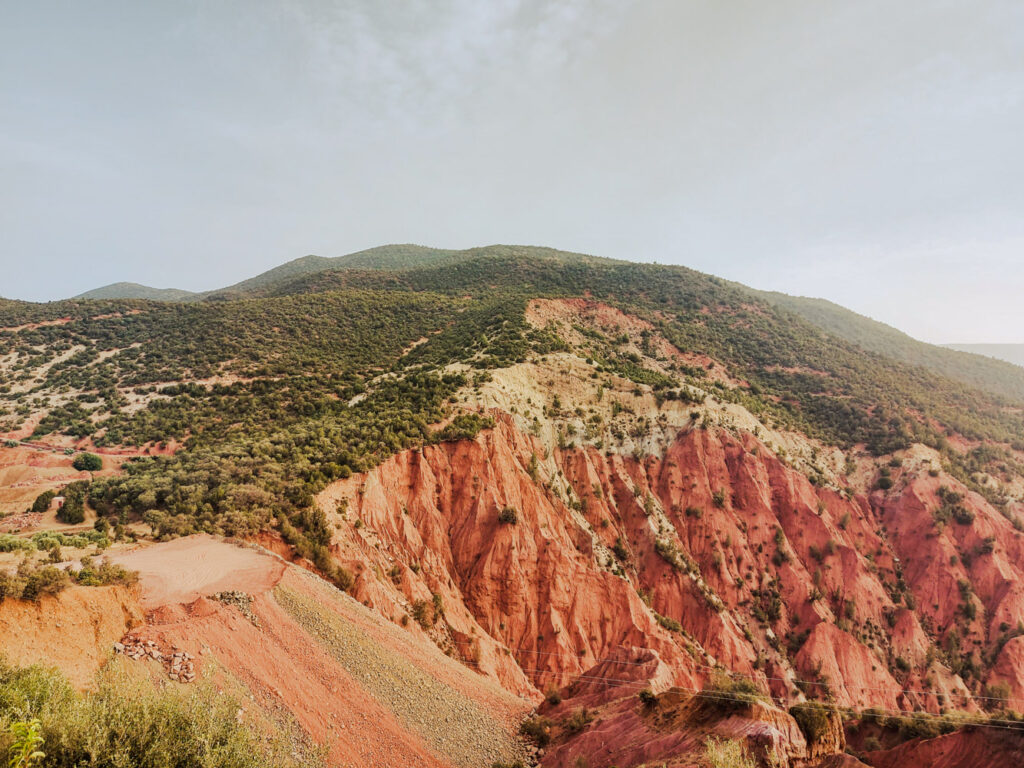
Our first stop brought us to a small row of shops which sprung out of nowhere, surrounded by rusty red coloured hills. Our driver guided us into one particular shop where a woman explained the importance of argan oil to local communities. She showed a demonstration of how the oil was extracted by women and the benefits the oil has. It was a brief but interesting stop. There was also the opportunity to try and buy some of their oil for ourselves.
Stop 2: Atlas Studios
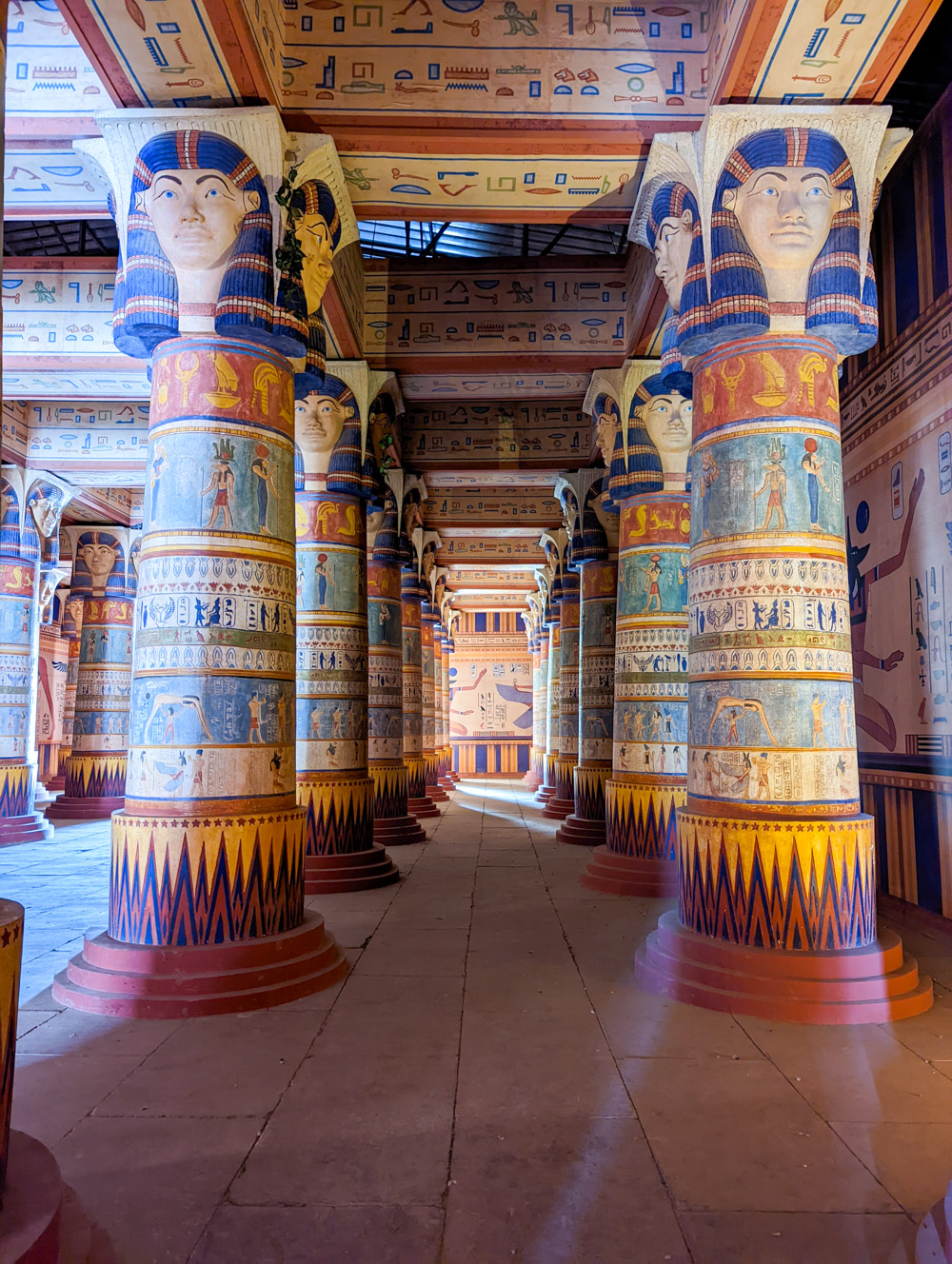
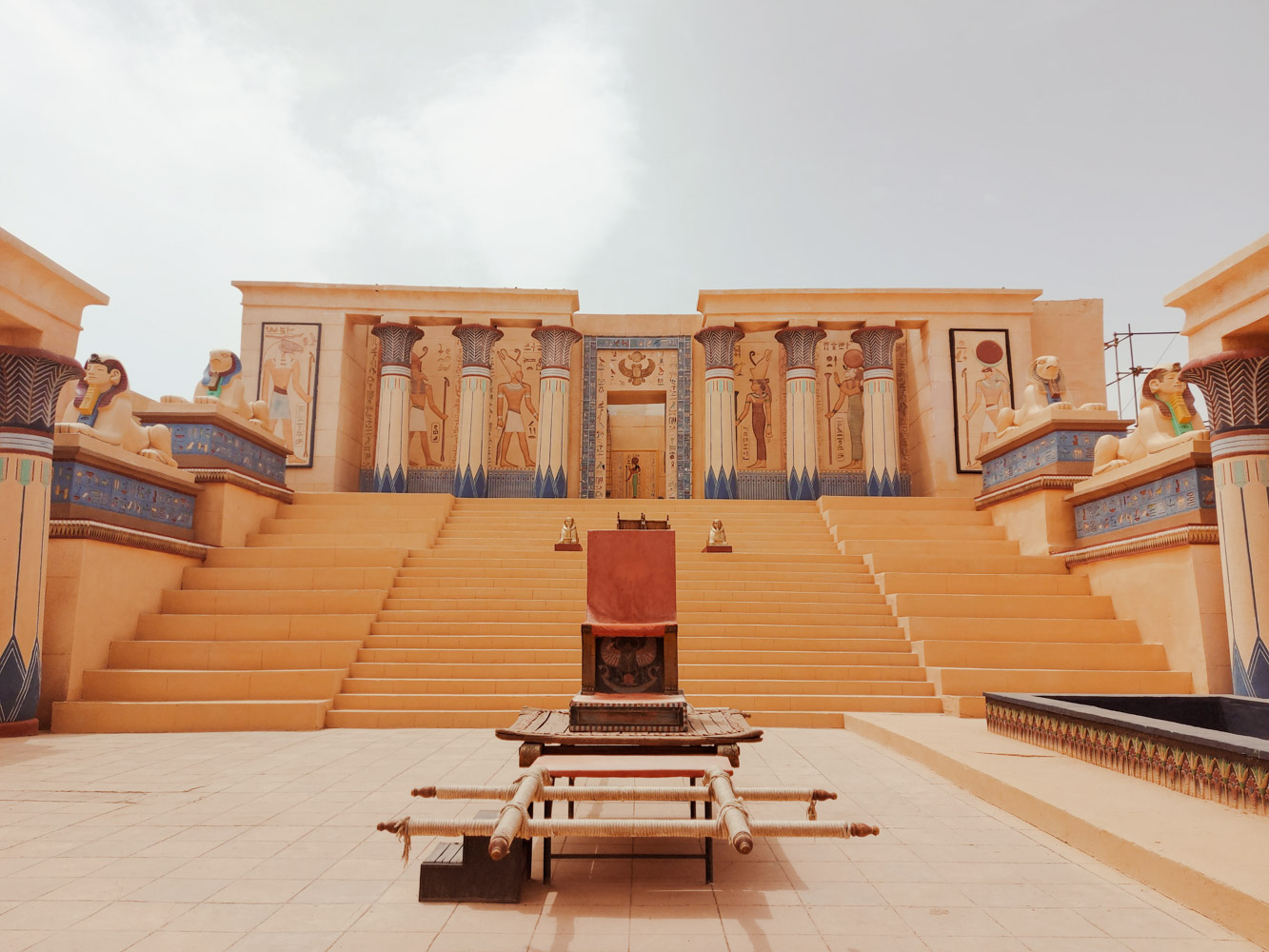
Towards the town of Ouzzarzate there are a few large studios and film sets sprawling out into the desert. Our driver took us to Atlas studios where we had to pay 80 dirham (approximately £7 or €7) for a guided tour.
The tour should us various props and sets from various films (most we hadn’t seen!). There was a bus from Prison Break, sets from Gladiator, The Mummy and Lawrence of Arabia. Off in the distance he pointed out a castle used in Game of Thrones but we had to pay extra to be taken there.
It was fascinating to see how fake the sets all look close up and how rickety they appear from behind. The guide explained that the Moroccon film industry is growing as more production companies come to them because they are cheaper. Plus they have the stunning scenery of the deserts and mountains. He said in the nearby towns, more young people were learning skills needed to go into film production so that the locals are starting to offer more than just cheap set building.
Stop 3: Lunch and Ait BenHaddou
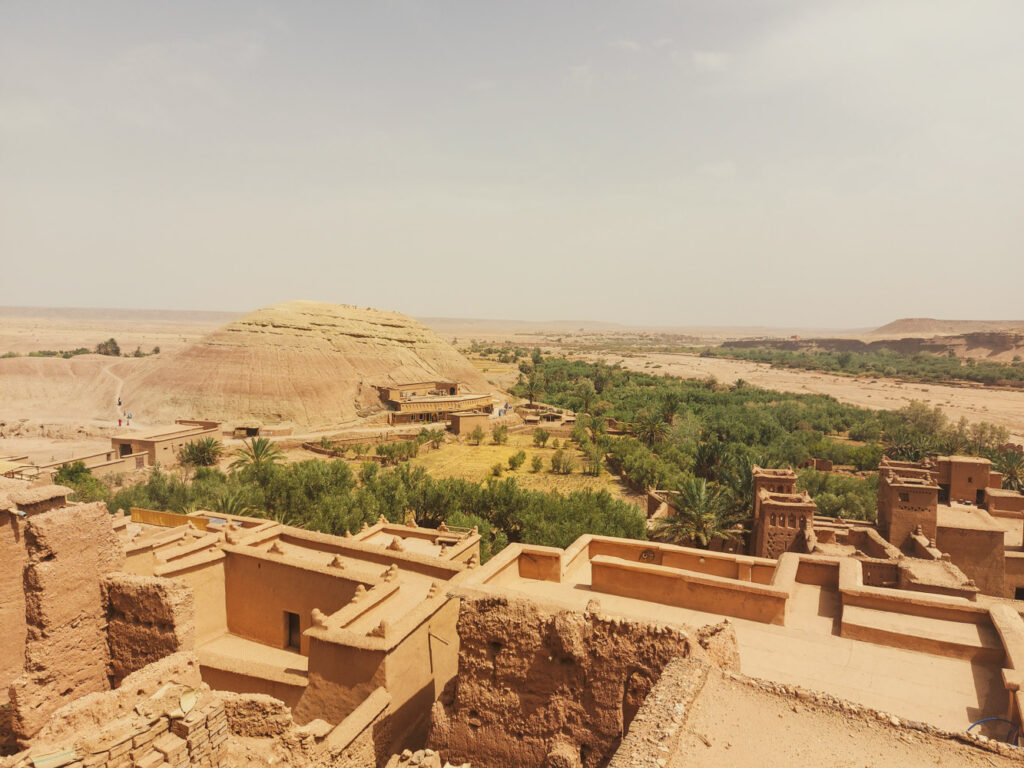
After lunch consisting of a fairly standard set menu another guide met us to show us Ait Benhaddou. We walked around the back of the newer village to a bridge which crossed a bone-dry river bed. The guide told us that it hadn’t rained there for two years. However when the snow melts in the mountains the river flows again, much to the delight of the villagers.
Entering Ait Benhaddou we were met with several stalls selling souvenirs and artists painting with saffron paints. Our guide led us through a maze of burnt-orange buildings constructed from clay and straw, to a roof terrace. From here we could see over the Kasbahs – small fortresses that housed the families of the village. Only four of these are still inhabited. As the village is a UNESCO world heritage site it can’t be changed or altered in ways that impact its authenticity. However prior to it becoming a UNESCO site, the village was a film set for Sodom and Gomorrah in the 1960s. The filmmakers built two new towers acting as a gateway to the city. However they did a great job of blending in the new constructions with the traditional architecture. As they were constructed before the UNESCO inscription, they are also preserved along with the rest of the village.
Our guide also led us to the top of the hill for more fantastic views before leading us into a carpet-makers studio. It is traditional in Berber culture for women to weave carpets. They use wool from camels, sheep and goats as well as cactus silk. All the threads are died using natural pigments from poppies, henna and saffron. Our guide explained that no two carpets are the same as the women never plan their design they just weave how they feel on the day.
Just as we left the village to board the minibus back to Marrakesh, it began to pour. I suppose we were lucky to experience their first rainfall in two years! I was glad it only began as we were leaving though!
Day 3: Jardin Majorelle
Jardin Majorelle
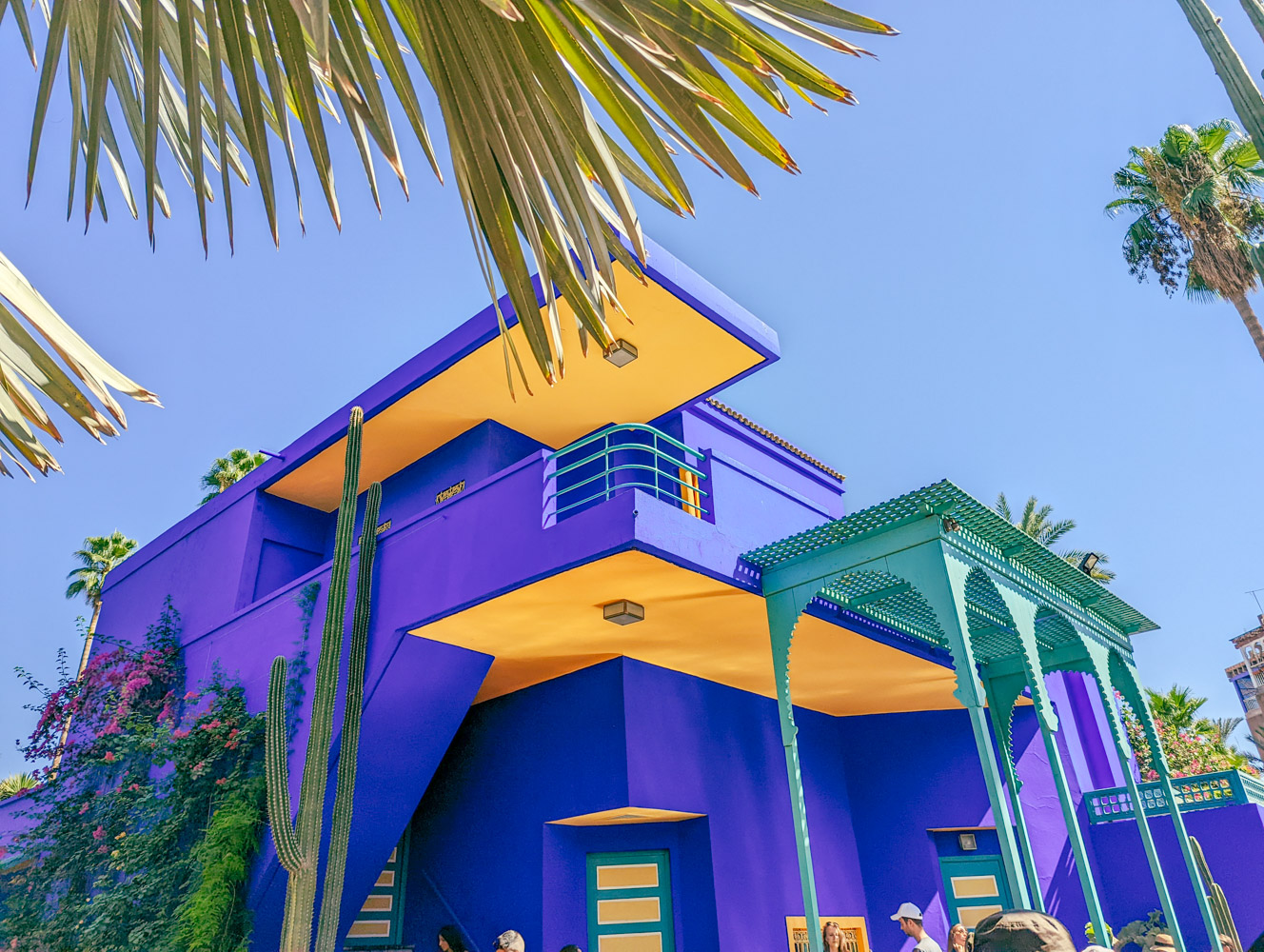
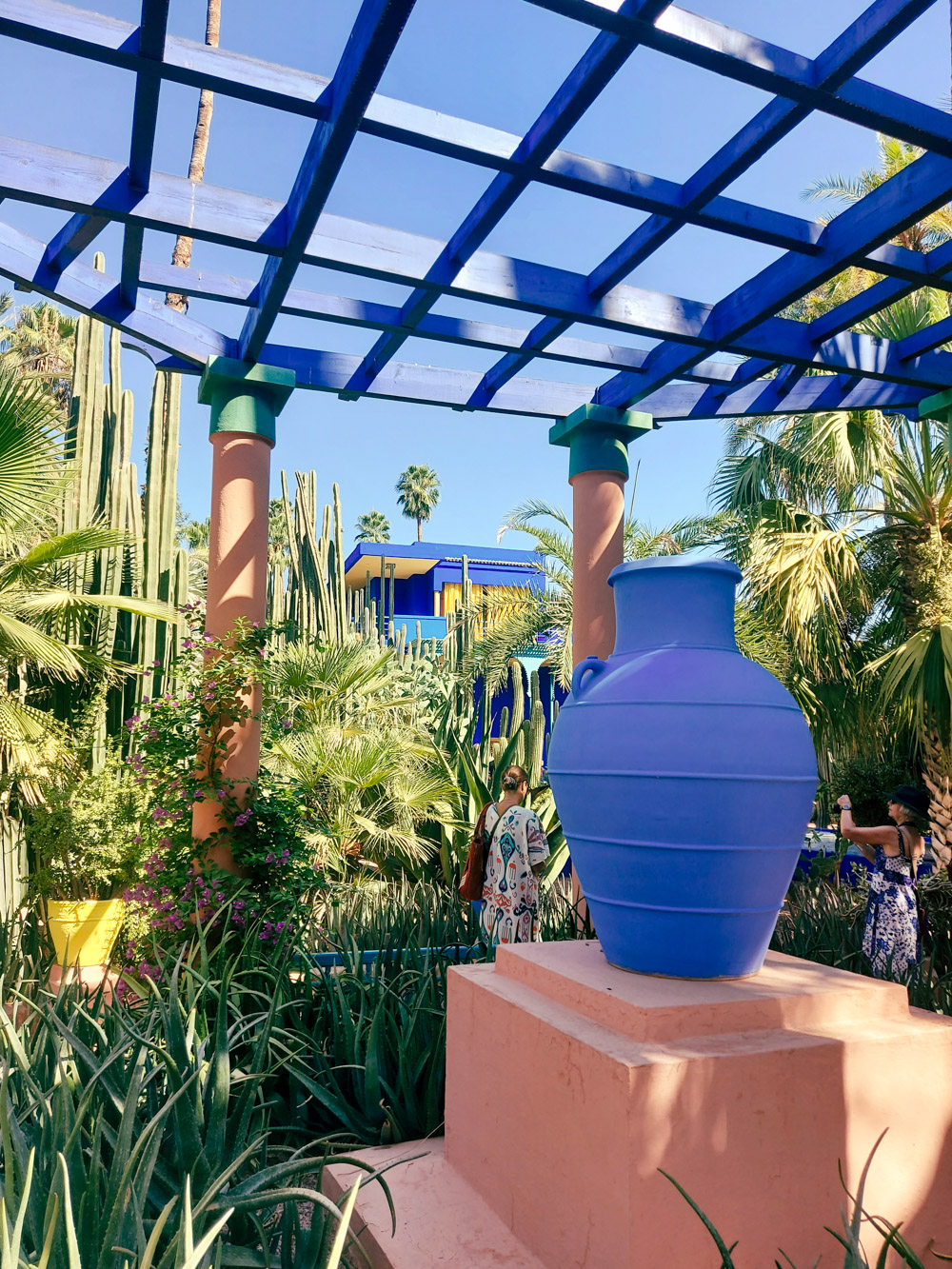
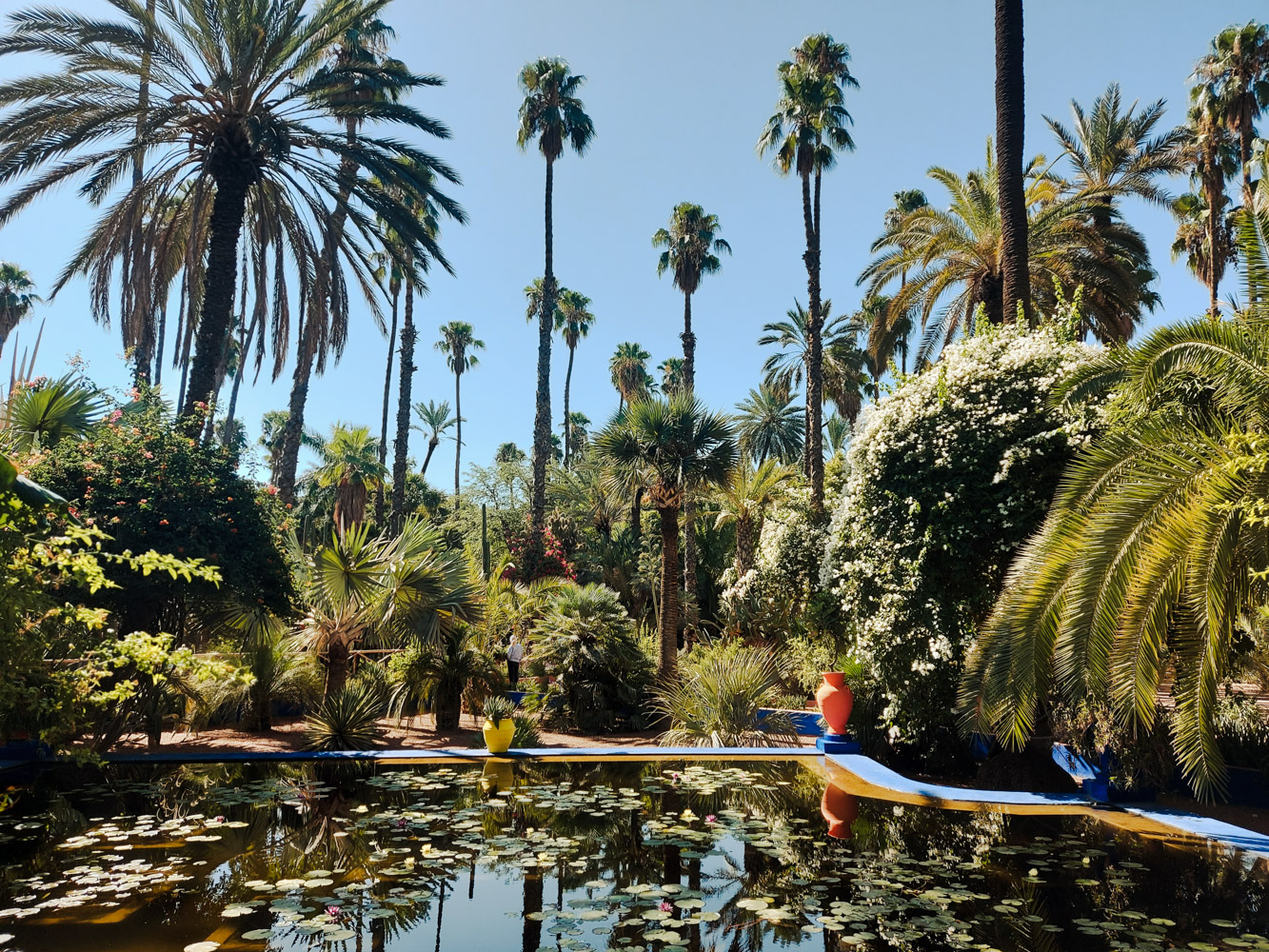
The Majorelle Gardens are perhaps one of the most famous sights in Morocco. It certainly felt like the busiest tourist hotspot of all the places we visited on our trip. The gardens are in the Gueliz neighbourhood, a much newer part of town than the Medina.
The focal point of the garden is the bold blue building which houses the Berber Museum. The building is tucked away into one corner. The rest of the garden is covered in a variety of plants with paths weaving between them. Throughout the garden there are plenty of picture perfect spots. Particularly around the gazebos and in front of the pods. You may even find you have to queue up for photo in certain spots.
Ben Youssef School
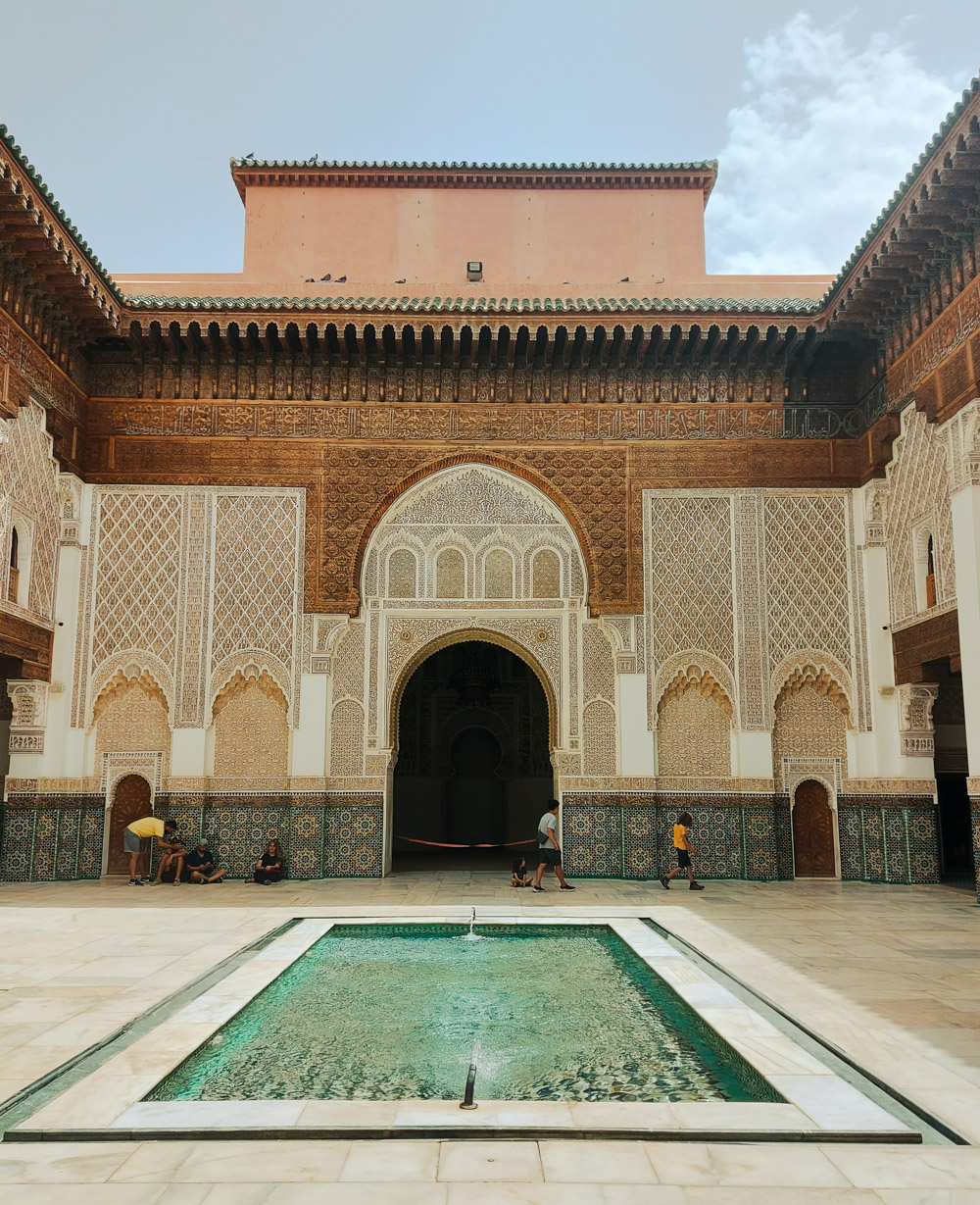
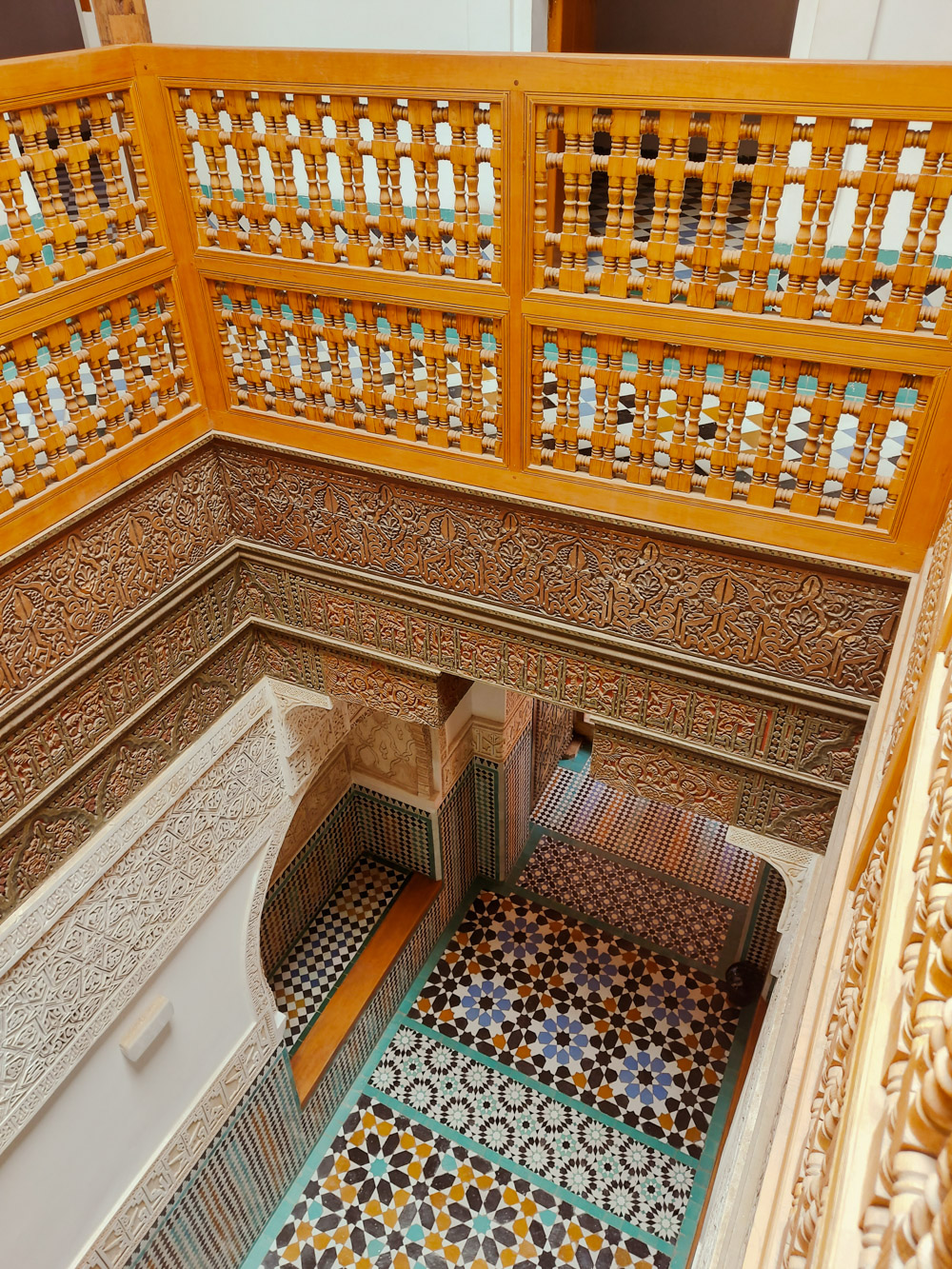
The Ben Youssef Madrasa is an old school house where students lived and studied the Koran and many other subjects. The current building was built in the 1500s but the school was established there a century before. Inside you’ll find a beautiful tiled courtyard with ornate archways. Upstairs you can explore the many dormitory rooms. These are empty of furniture so it is hard to picture how the children lived there and how many were in each of the tiny rooms but at one point it could accommodate 800 students!
Almoravid Koubba
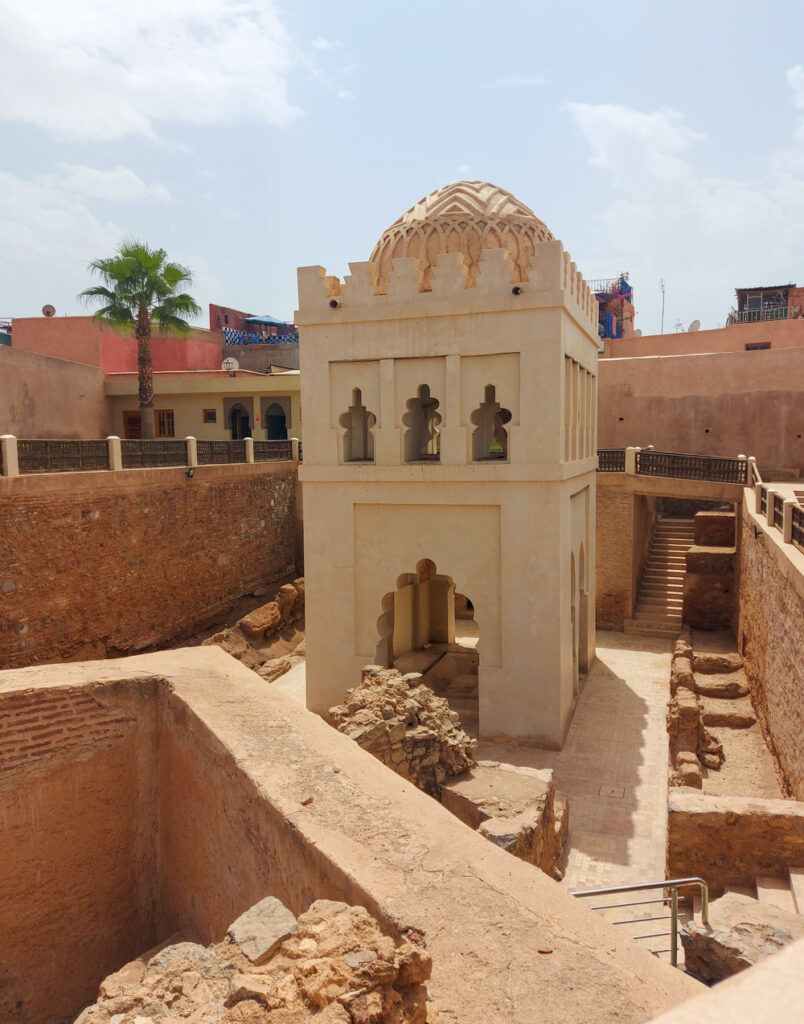
The Almoravid Koubba is one of the oldest buildings in Marrakesh. It was built in the 11th century by the Almoravid dynasty. The subsequent dynasty destroyed and rebuilt many buildings in Marrakesh but for some reason the Koubba survived and you can still see its ruins today.
Le Jardin Secret
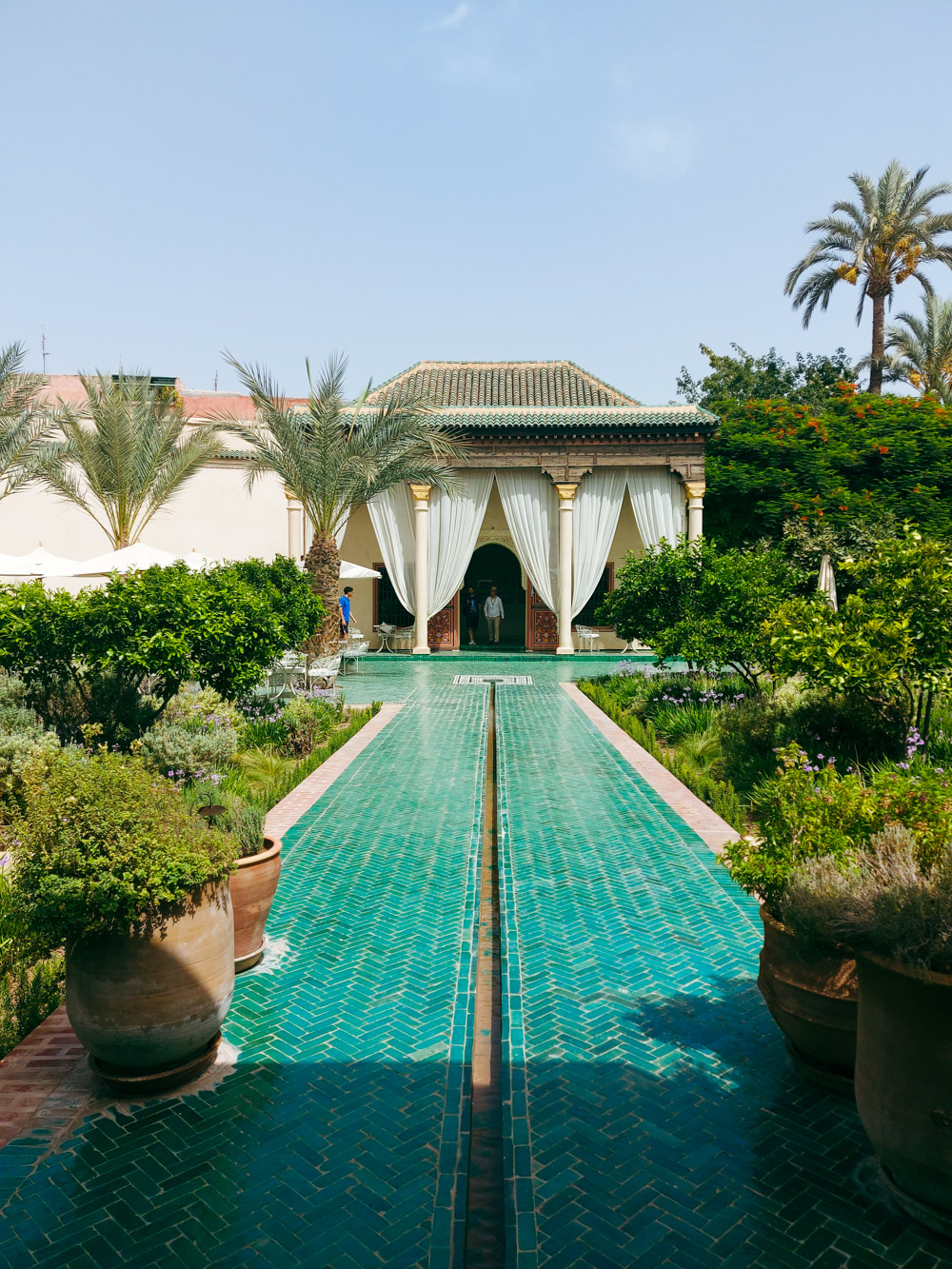
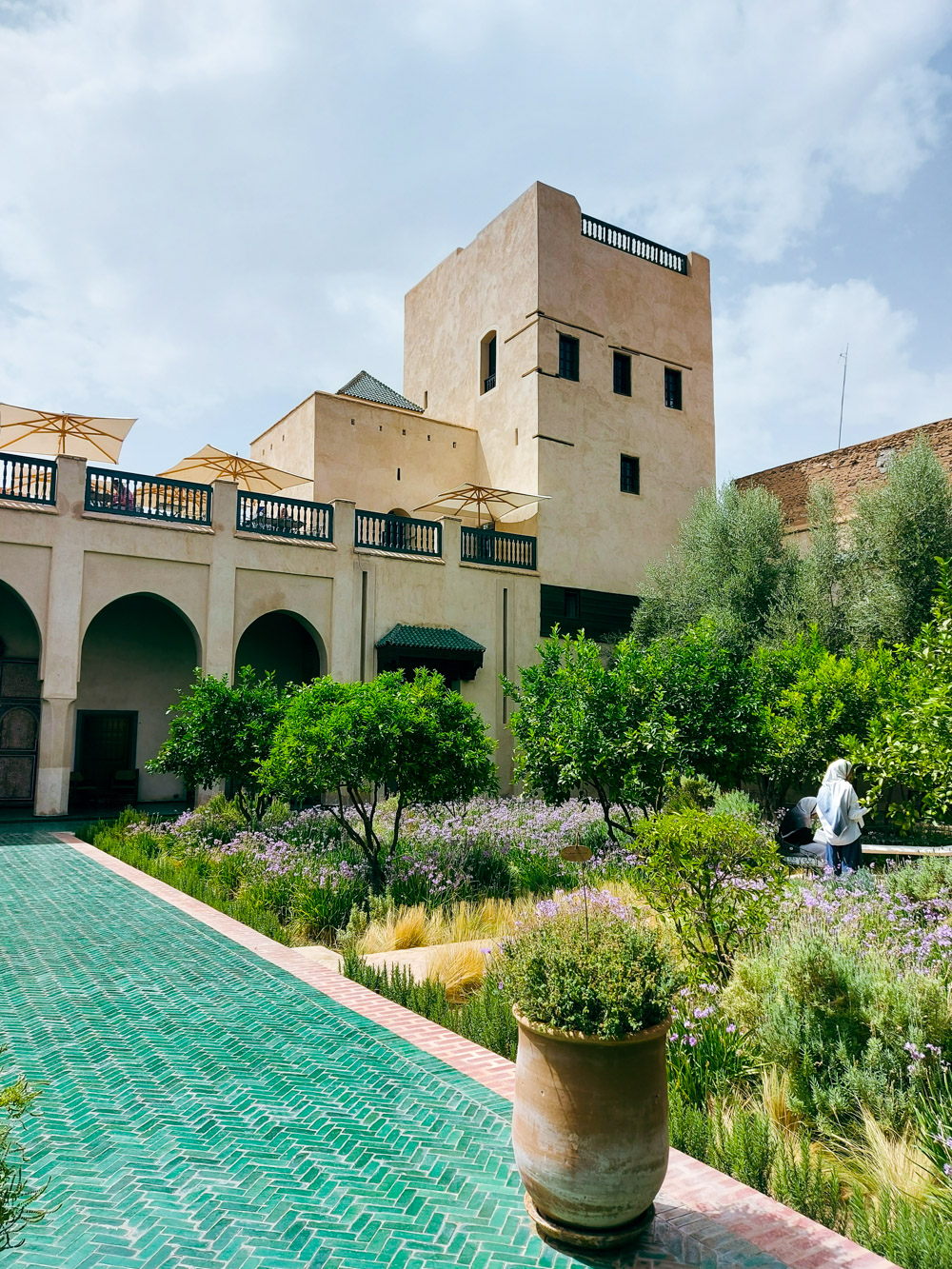
Two gardens in one day! The Secret Garden, as the name suggests is much less busy that Jardin Majorelle. Yet, it still has plenty of great photo opportunities, you just wont have to wait so long and you might actually be able to take a photo without other people in the background! In the centre there is a lovely gazebo with a seating area, a lovely place to stop and rest for a while. Included in the entrance fee is access to a small exhibit on the history of the gardens and its restoration work.
Where to Stay in Marrakesh?
There are two main areas I would recommend looking for accommodation in Marrakesh. The first is in the older part of town around the Medina. The maze of narrow streets and souks might make it hard to find your way at first but you’ll be staying right in the heart of Marrakesh. Within this area you’ll likely find lots of Riads. Morocco is well know for its riads – homes centred around a large courtyard. The courtyards often have small pools and traditional Moroccan tiles. We stayed in a very welcoming riad called Dar Aurora.
The other area of Marrakesh that I would recommend is the much newer neighbourhood of Gueliz. We stayed 3 nights in both the Medina and Gueliz and felt like we were in two completely separate countries. Gueliz feels much more European, the restaurants there tend to serve alcohol and there are even bars and clubs. There is a high street with familiar brands like H&M and Zara. It feels a little less authentic than the older parts of town but offers much larger, more luxurious hotels which may appeal more than the labyrinth of riads. We stayed in Diwane Hotel and Spa. Although we didn’t use the spa facilities, we made good use of the pool.
When is the best time of year to visit Marrakesh?
Marrakesh is best avoided in the height of summer. During July and August temperatures can reach 37 degrees. Even June and September peaks around 33 degrees. March-May and October-November are great times to visit for exploring. The temperatures hover around the mid-twenties so its warm enough with out being stifling. But if you are looking for a summer sun and days by the pool, June and September are perfect.
More Morocco Travel Tips
If you’re planning a big trip around Morocco, here are some more articles that might help with further tips and inspiration.
Chefchaouen is known as Morocco’s Blue City and it’s easy to see why. The old town is almost entirely painted blue. From the cobbled streets to the stepped alleyways, from cafes and market…
Continue Reading Things to do in Chefchaouen, Morocco’s Blue City
Morocco is a beautiful country with a mixture of ancient cities, markets and rural landscapes to explore. It is a great country to tour around but before you plan your trip, here are…
Continue Reading Morocco Travel Tips: Things to Know Before You Go

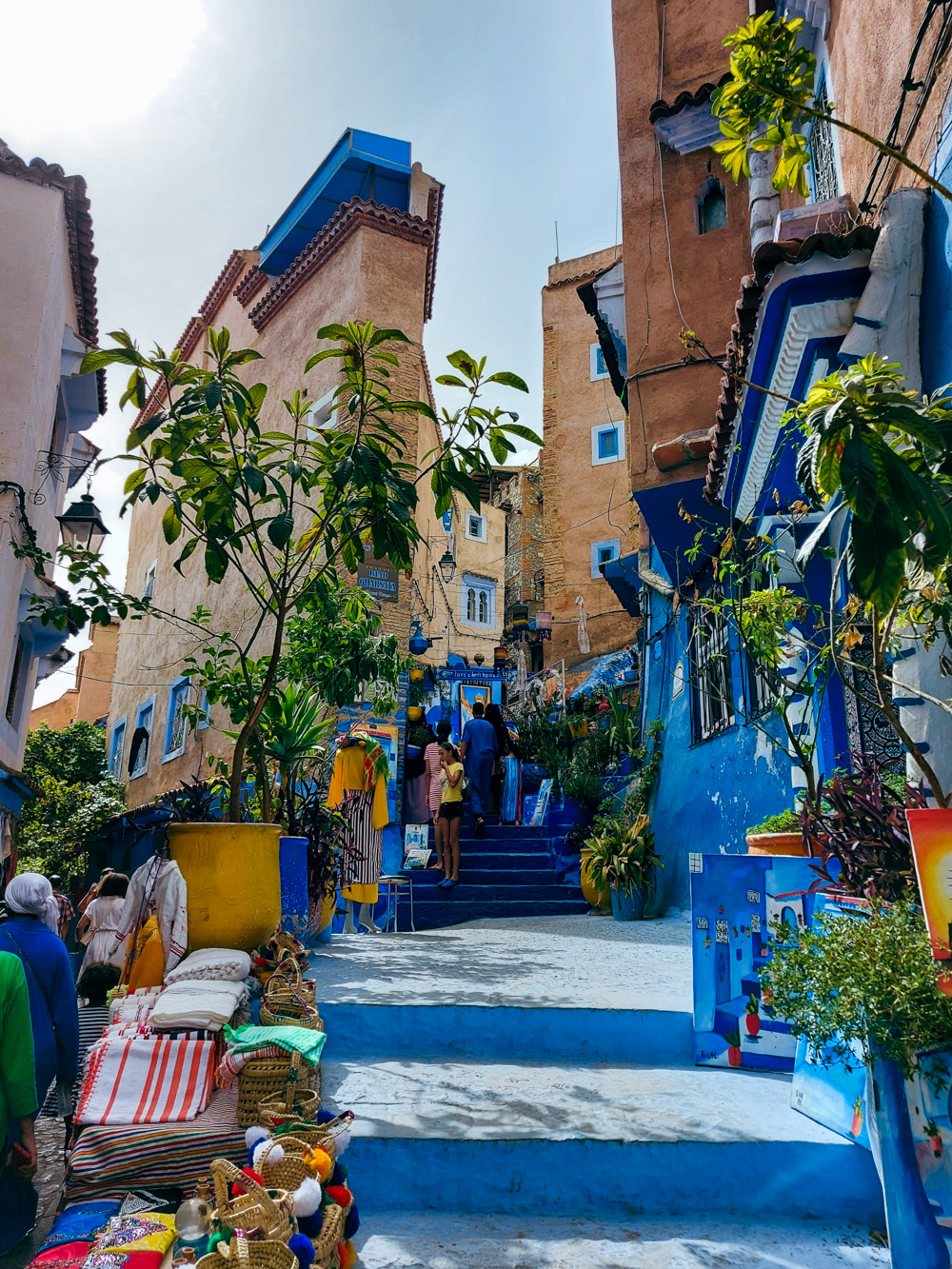
2 thoughts on “3 Days in Marrakech Itinerary”